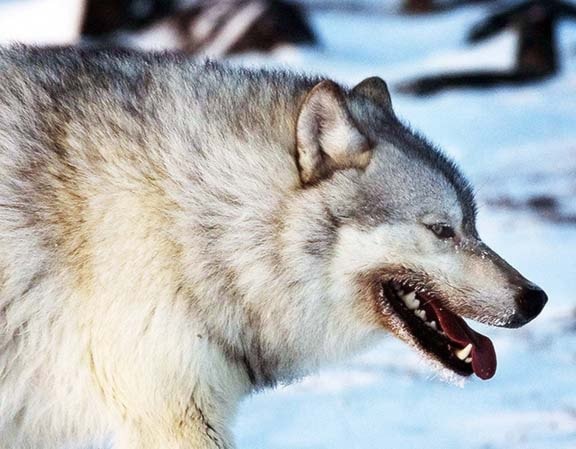The provincial government is seeking public consultation on its new Wolf Management Plan that will provide guidelines on a region-by-region basis to deal with B.C.’s growing wolf population.
Minister of Forests, Lands and Natural Resource Operations Steve Thomson told the Townsman the plan does not mean the province will begin culling wolves, but instead lays out the guidelines to manage the wolf population in a science-based manner in each region of the province.
“The report will help inform future policy,” he said.
The plan is the first of its kind dealing with the management of the grey wolf in more than 30 years.
The last report was completed in 1979, and Thomson said it was important to complete the plan to participate in the Committee on the Status of Endangered Wildlife in Canada (COSEWIC) and the Convention on International Trade in Endangered Species of Wild Fauna and Flora (CITES).
“Those are the main drivers of having an updated plan out there,” Thomson said.
The plan lays out seven management tools that the province will be able to use with information on their effectiveness, advantages and disadvantages. It was developed by biologists and other stakeholders and has compiled the scientific evidence that could be used in the future to make decisions.
“That’s why it’s important that we put it out for public opinion,” Thomson said.
Among the tools suggested, the direct removal of packs is listed as the most effective method; however, the plan says that the threat is eliminated in the short term but the pack quickly rebounds. It also says elimination of packs is “politically difficult to implement.”
Moderately successful solutions are to launch a public education campaign to encourage hunting and trapping of wolves. There are currently no bag limits for hunting in the Rocky Mountain Trench below 1,100 metres. The removal of individual wolves from a pack can often help when the animal is targeting livestock, but it is moderately successful because the pack will often respond by more females being available for breeding if the alpha-female is removed. Typically only the alpha-female will breed each year.
Thomson said it was important to outline a number of options for wolf management, because every region has different priorities.
“We live in a unique province,” he said. “This is not a plan that outlines specifically, there are many options.”
Thomson said the focus in the Kootenay region is to manage the relationships between predator and prey when it comes to preserving livestock and endangered species. Research included in the new report suggests that the predator-prey relationship between wolves and the mountain caribou is paramount for that species’ survival.
“One of the key elements is to make informed plans on predator-prey relationships,” Thomson said. “It’s going to be important to make the decisions based on science.”
Thomson said the plan includes the information available on wolves at this time, but it acknowledges that there are knowledge gaps, such as the relationship between wolves and other predators.
“The plan provides a lot of science behind the species,” he said.
What is known is that wolves are a hardy species that is growing across the province. There is no exact population number available due to the species’ elusive nature, but it is estimated in the total Kootenay region the population is between 550 and 850 wolves.
The population was nearly wiped out of the Kootenay region by hunting in the 1970s. The season was closed until the 1980s when it began to rebound and has seen a harvest of between 20 and 60 wolves each year since the mid-1990s. The harvest spiked in 2009 when a record number of wolves were taken by hunter and trappers. The plan did not list the exact number of wolves harvested in 2009.
“Wolves are a very durable species,” Thomson said.
Not only are wolves rebounding, their territory is expanding and many are returning to regions where they were previously extinct, such as in Kootenay and Thompson. Wolves on average have five pups per litter when prey is plentiful.
Hunting is difficult to rely on as a management tool even though in the Kootenay region there are no bag limits in areas adjacent to caribou habitat beginning September 1.
“Often wolf hunting is opportunistic,” Thomson said.
Thomson said the provincial government is looking forward to feedback on the wolf management plan from the public.
“It’s a subject that people are very interested in,” he said.
To view the entire plan and provide feedback, visit http://www.gov.bc.ca/for/.
